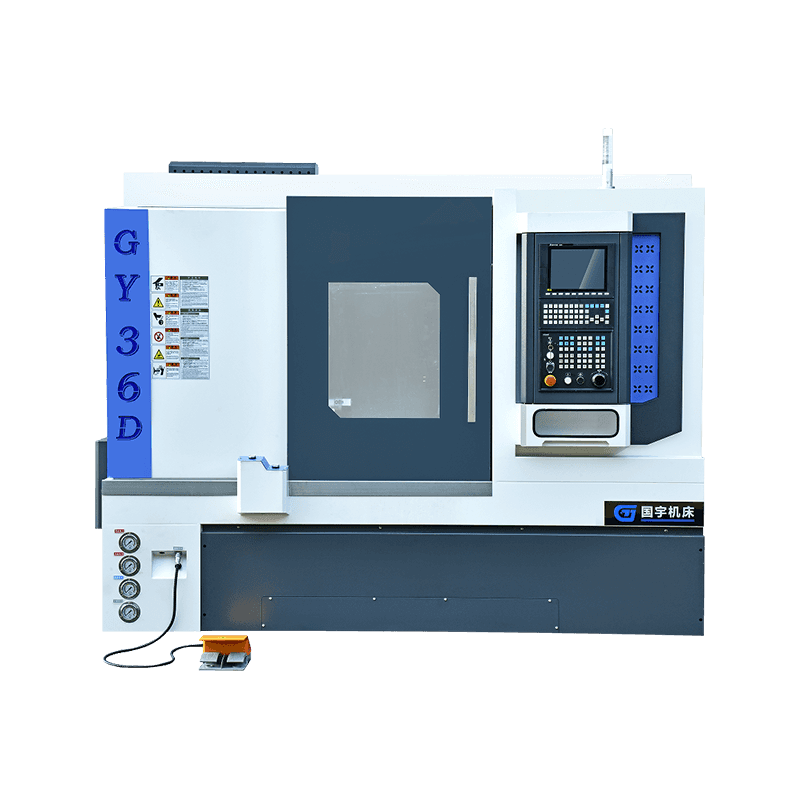We are pleased to present the VMC1580 High-Speed Vertical Machining Center, a reliable and efficient...
See Details

The world of computer numerical control (CNC) machining has expanded far beyond the massive industrial machines found in large factories. Today, mini CNC machines bring the precision and automation of CNC technology to workshops, studios, small businesses, and even homes. These compact tools open up a world of possibilities for creators, hobbyists, and entrepreneurs. However, with several types available, choosing the right one can be a challenge.
This guide will walk you through the common types of mini CNC machines, breaking down their ideal uses, benefits, and limitations to help you make an informed decision.
The mini CNC router is arguably the popular and versatile type in this category. It operates on the same principle as its larger industrial cousins but is designed for smaller workpieces and softer materials.
Advantages:
Material Versatility: Excellent for cutting and engraving a wide range of non-metallic materials. This includes wood (plywood, hardwood), plastics (acrylic, PVC), composites, and even soft metals like aluminum with the right setup and cutting bits.
Large Work Area Options: Relative to other mini CNCs, routers often offer the largest available work areas. Desktop models can accommodate projects like intricate signs, detailed inlays, and custom panel designs.
Software Ecosystem: Benefits from a mature and user-friendly software ecosystem, with many affordable or free CAM programs available to generate toolpaths from designs.
Disadvantages:
Dust and Debris: Routing creates a significant amount of dust and chips, necessitating a robust vacuum or dust collection system to maintain a clean and safe working environment.
Noise Level: These machines can be quite loud during operation, which may be a consideration for home users.
Limited on Hard Materials: While capable with aluminum, they are generally not rigid or powerful enough for effectively machining steel or other hard metals.
The mini CNC mill is the precision workhorse of the small-scale machining world. It is structurally more rigid than a router and is designed for machining harder materials, particularly metals.
Advantages:
Superior Rigidity and Precision: Built with a solid frame and often using linear guides, mills are designed to handle the forces of cutting metal without deflecting. This results in higher precision, better tolerances, and finer surface finishes.
Ideal for Metals: This is their primary strength. A mini mill can effectively machine metals like brass, aluminum, and even steel on a small scale, making it good for creating functional parts, tooling, and intricate metal components.
Minimal Kerf: Unlike a laser, a mill removes material with a physical bit, meaning there is no heat-affected zone and the width of the cut (kerf) is precisely defined by the tool.
Disadvantages:
Smaller Work Area: To achieve their rigidity, mills often have a more compact work envelope compared to a similarly priced router.
Slower Material Removal: The process of milling metal is inherently slower than routing wood or cutting with a laser, as it involves higher forces and requires more conservative cutting depths and speeds.
Higher Cost: Generally, a mini mill capable of machining metal will be more expensive than a mini router of a similar size.
This type uses a focused laser beam to vaporize or burn material, making it a non-contact process. Desktop CO2 and diode laser models have become incredibly accessible.
Advantages:
Non-Contact Process: Since the tool never touches the material, there is no tool wear and no risk of breaking bits. It also allows for the processing of very fragile or thin materials that might break under the pressure of a router bit.
Intricate Detail: Excellent for achieving extremely fine details, complex patterns, and sharp edges that would be difficult or impossible with a physical cutting tool. Perfect for engraving logos, photographs, and serial numbers.
Clean Cuts on Certain Materials: Provides very clean, sealed edges on materials like acrylic and wood, often with a polished look.
Disadvantages:
Material Limitations: Primarily suited for organic materials (wood, leather, fabric, paper) and certain plastics. It cannot cut clear acrylic effectively (as the laser passes through it) and is completely unsuitable for metals beyond surface marking (unless it's a much more powerful fiber laser).
Safety Concerns: Requires serious safety protocols. The process generates harmful fumes, necessitates fire safety measures, and the laser itself is a significant hazard to eyesight, requiring a fully enclosed and interlocked unit.
Heat-Affected Zone: The laser burns through material, which can leave a charred or discolored edge (kerf) on some materials like wood.
The better mini CNC machine depends entirely on your primary intended use:
For woodworking, sign-making, and general hobbyist crafting: A Mini CNC Router offers the greatest flexibility.
For machining precise metal parts, prototypes, and tools: A Mini CNC Mill is the necessary, dedicated choice.
For engraving, intricate paper/leather art, and personalized items: A Mini Laser Cutter/Engraver is unmatched for detail.
Our team of digital and business experts will guide you to the right direction.
Let's Talk